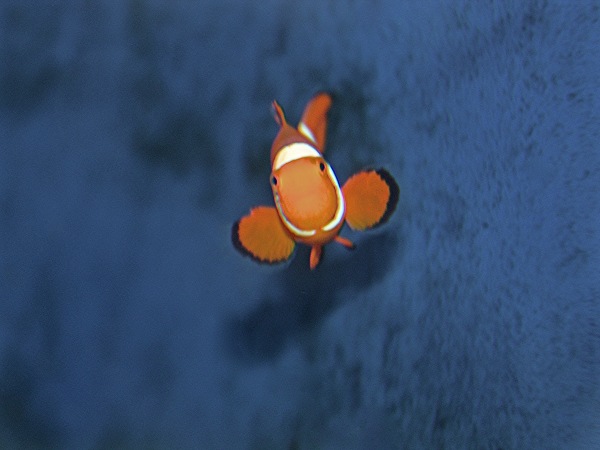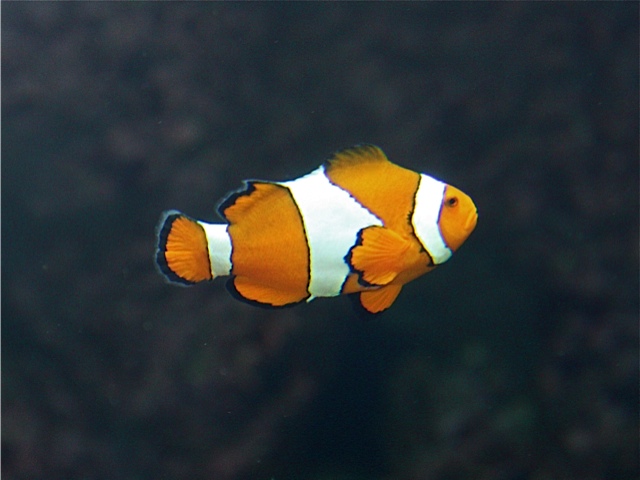TAXONOMY
Kingdom: Animalia
Phylum: Chordata
Class: Actinopterygii (ray-finned fishes)
Order:Perciformes (Perch-likes)
Family: Pomacentridae (Damselfishes, Chromis, Aneomonefishes)
Subfamily: Amphiprioninae (anemonefishes)
Genus/species: Amphiprion ocellaris
GENERAL CHARACTERISTICS: Adults are orange with three broad vertical white bands with thin black margins. Females are larger than males. Similar to the Clown Anemonefish (Amphiprion percula) but has 11 spines in the dorsal fin compared to 10, while the spiny part of the dorsal fin is also taller.
Length up to 9 cm (3.5 inches)
DISTRIBUTION/HABITAT: Found among tropical Pacific Ocean coral reefs. They sleep and feed among the tentacles of their host anemone. Stichodactyla gigantea, Stichodactyla mertensi, as well as the anemone Heteractis magnifica and others. The False Clownfish is usually found at depths of about 15 m (50 ft).

(Amphiprion ocellaris) aka FALSE CLOWNFISH
DIET IN THE WILD: Feeds primarily on zooplankton, especially copepods and also on filamentous algae.
REPRODUCTION: A. ocellaris breeds continuously at the Steinhart. Adhesive eggs are laid on a patch of cleared rock near the host anemone’s base and guarded by the male. Eggs hatch after 10 days. The tiny transparent planktonic larvae swim away from the anemone. Two weeks later the larvae metamorphose into small fish. As protandrous hermaphrodites; all individuals mature as males, and all females are sex-reversed males. In the absence of a female the largest male will turn into a female.

Longevity: Up to 12 years in captivity
REMARKS: Clownfish and anemone display a classic case of mutualism. Clownfish become resistant to their host by gradually (matter of minutes to days) acquiring a covering of mucus
by brushing against the tentacles of their host. Once the fish has become chemosensorilly camouflaged, the host anemone’s nematocysts do not sting the clownfish.

Some of the anemone’s nutrition results from the clownfish’s activities; clownfish gain protection among the anemone’s nematocysts.
Nemo and his parents in Finding Nemo resemble this species. That said, Marlin, Nemo’s father, given the scenario would have changed into a female following the death of Nemo’s mother and remained near his host anemone, rather than swimming to Sydney. But then the film makers wouldn’t have a narrative to support this film! The name “Nemo” has found its way into FishBase (http://www.fishbase.org) as a common name for this species in the USA!
References
California Academy of Sciences Steinhart Aquarium Philippine coral reef 2016
Animal Diversity Web animaldiversity.org/accounts/Amphiprion_ocellaris/
fishbase fishbase.org/summary/Amphiprion-ocellaris.html
Flickr http://www.flickr.com/photos/cas_docents/sets/72157608339622313/
WordPress shortlink http://wp.me/p1DZ4b-mp

